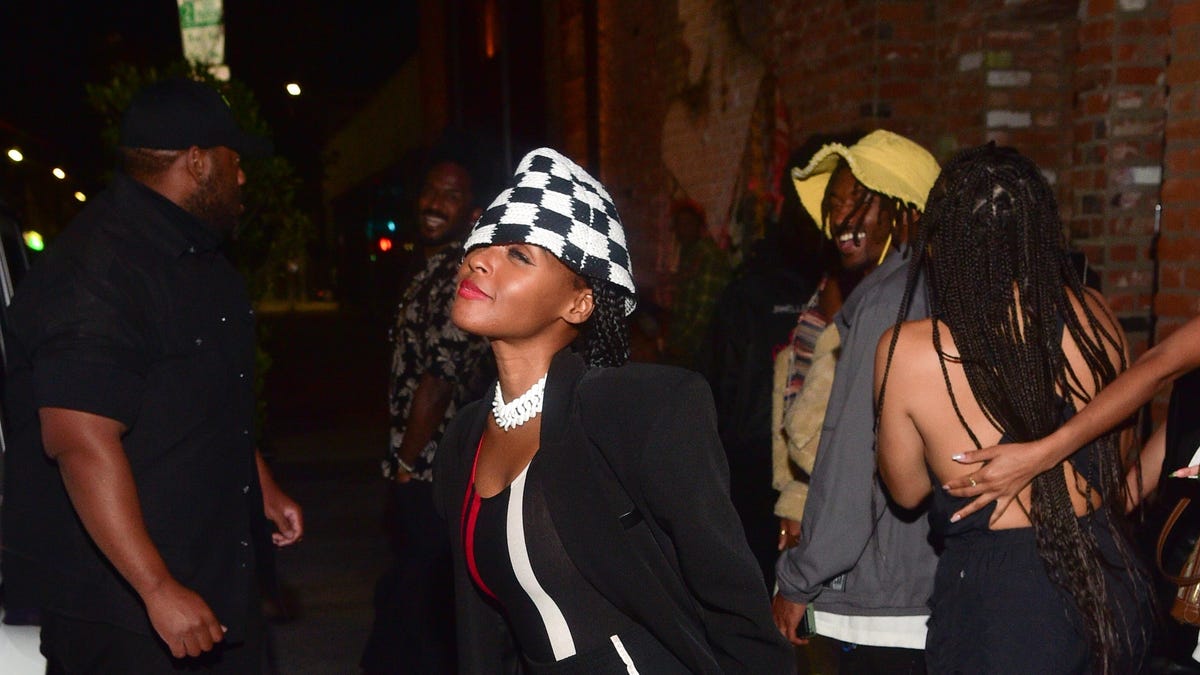When I got married, I chose a dress by Simone Rocha. As a nonbinary person, I didn’t want anything conventionally feminine, but I did want a spectacular piece of clothing. The dress I picked was from the spring 2018 collection—Elizabethan in its shape, with leg-of-mutton sleeves and a huge skirt. It was gothically black, covered in sprays of tiny red roses. The exaggerated shape felt sculptural, romantically androgynous, and definitely un-girly. When I took it off to dance, two friends, both gay men, took turns slipping it on.
We got married at a University of Cambridge college, in a 15th-century hall decorated with Pre-Raphaelite exuberance in the same unusual black, red, and green palette as the dress. There were heraldic roses and other botanical motifs everywhere you looked, rising up the walls and swarming across the painted ceiling. It was like entering a fantastical Eden,
at once traditional and anarchic.
Flowers are often coded as sweetly feminine, especially in fashion, but their historical use is far stranger and more subversive. Before I became a writer, I trained as an herbalist, falling deep under the spell of medieval herbs, with their bewitching floral associations. Flowers had once formed a kind of secret language, an arcane code that only an adept could read. Bouquets, paintings, even dresses could carry a hidden message, by way of the humble plants they contained.
While I was researching my new book, The Garden Against Time: In Search of a Common Paradise, I came across a historical study with the beguiling title of Queen Elizabeth’s Wardrobe Unlock’d. It was an account of the marvelous dresses the Tudor queen had worn, many of them densely embroidered with flowers, which broadcast a coded message about her virtues. The dress worn by Elizabeth in the famous Hardwick Portrait includes pansies for humility, lilies for purity, and roses to emphasize her Tudor lineage. They appear on a dress swimming with floral, animal, and even monstrous life. It wouldn’t look out of place on a catwalk now, perhaps worn by Gwendoline Christie at Maison Margiela.
It was William Morris who brought the lost language of flowers back into everyday circulation. He’d pored over medieval herbals as a child, and their flowers reemerged in his fluid, fertile prints. Morris wanted everything to be as beautiful as possible, and he covered the staid bedrooms and stiff drawing rooms of the Victorian world with a restless profusion
of marigolds and roses, chrysanthemums and lilies. His flowers encoded a subversive dream of a shared Eden, a secret message he even managed to install in the Throne Room of St James’s Palace.
There’s a similar sort of subversion going on in the clothes of Steven Stokey-Daley, a young British designer much loved by Harry Styles. Stokey-Daley is a gay working-class man who draws his inspiration from the elitist and highly coded uniforms of British public schools. His label S.S. Daley deploys the distinctive shapes and styles of an aristocratic wardrobe, creating a gorgeous Brideshead Revisited world of dressing gowns, flowing shirts, and rowing blazers. It’s not so much an emulation of privilege as an exposure and reclamation of how power is worn.
Since presenting his debut collection in 2020, Stokey-Daley has incorporated flowers into his work, often using 16th-century botanical prints. One of my prized possessions is an oversize S.S. Daley men’s shirt, finely striped and covered in an angular tracery of orange poppies. His flowers spell out a distinctive and defiant queerness, disrupting the conventional language of gender.
Simone Rocha’s spring 2024 collection was also awash with gender-bending florals. She sent both male and female models down the catwalk in shirts and jackets cunningly folded to create outsize floppy roses. Some models carried roses; others had rose transfer tattoos on their legs. The pièce de résistance was a series of tulle dresses stuffed with real roses. “They smelled amazing,” she told me. Rocha is a keen gardener, especially of roses, and it felt natural to incorporate the flowers she loves into her clothes. What excited her was “to contrast the natural with the man-made. In particular, the stuffed rose dresses were almost to mimic the boning of a garment, but trapping it and exposing it in tulle.”
This is the kind of floral fashion I love. Queen Elizabeth I would have understood its appeal: clothes that are like walking inside a private garden, in bloom summer and winter alike.
Olivia Laing’s new book, The Garden Against Time: In Search of a Common Paradise, is published by W. W. Norton.
A version of this story appears in the June/July 2024 issue of ELLE.
















